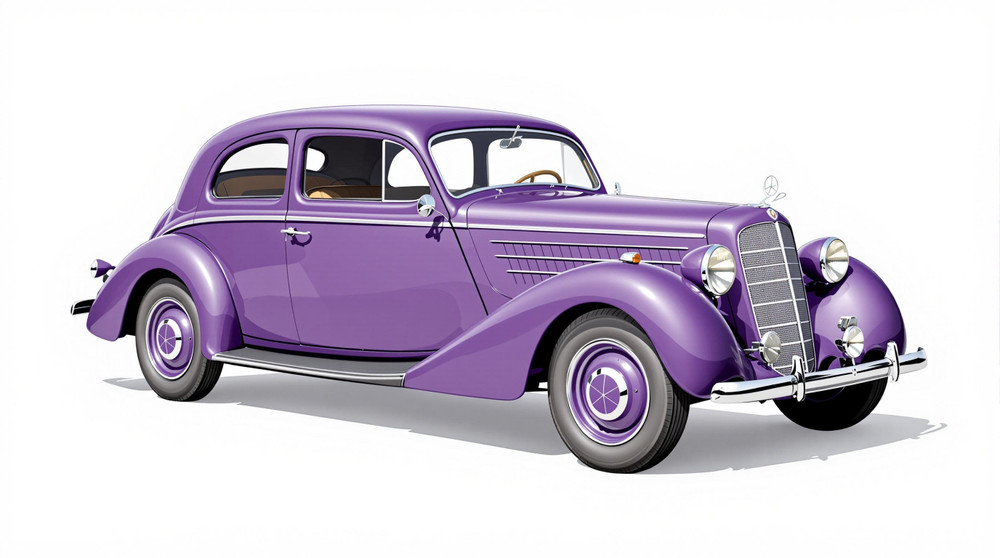Image of 1937 Mercedes-Benz 170 V, Note: These illustrations use artistic license and may differ from actual historical models.
Performance Metrics
Fundamental Metrics
Emotional Appeal
MMP Rating
| Engine Specifications | |
|---|---|
| Engine Options: | Inline 4 |
| Displacement Range: | 1.7L |
| Horsepower Range: | 38 HP |
| Torque: | Estimated at 72 lb-ft |
| Compression Ratio: | 6.0:1 |
| Ignition System: | Battery Ignition |
| Cooling System: | Water-cooled |
| Performance Specifications | |
| 0-60 Time: | Information not available |
| 1/4 Mile Time: | Information not available |
| Top Speed: | 68 mph |
| Transmission and Drive | |
| Drive Type: | Rear-wheel drive |
| Transmission Type: | 4-speed manual |
| Fuel and Efficiency | |
| Fuel System Type: | Carburetor |
| MPG: | Information not available |
| Dimensions and Brakes | |
| Brakes: | Drum brakes |
| Wheelbase: | 112.6 inches |
| Weight: | 2,425 lbs |
Note: Specifications for classic cars are given to the best of our ability, considering the limited and variant data available.
A Journey Back to Automotive Excellence: The 1937 Mercedes-Benz 170 V
The 1937 Mercedes-Benz 170 V stands as a testament to an era when engineering finesse and aesthetic elegance were paramount. Born from the storied halls of Mercedes-Benz, a marque synonymous with luxury and innovation, this vehicle emerged as a beacon of automotive progress in pre-war Germany. Its significance is not merely rooted in its historical context but also in its role as a pioneer of passenger car design, setting benchmarks that would influence the industry for decades. Among its many accolades, the 170 V was known for being one of the first cars to feature an all-independent suspension system, a remarkable feat that offered an unprecedented level of comfort and handling.
Design and Innovation: The Artistry of the 1937 Mercedes-Benz 170 V
The exterior of the 1937 Mercedes-Benz 170 V exudes a timeless charm, with its sweeping curves and poised stance. The vehicle's design is a harmonious blend of form and function, featuring a prominent grille that proudly displays the iconic three-pointed star. Inside, occupants were greeted with an interior that showcased the craftsmanship of the era. High-quality materials such as wood and leather were used throughout, offering a sense of luxury that was unrivaled at the time. Technologically, the 170 V was ahead of its contemporaries. It boasted innovations like hydraulic braking systems and the aforementioned all-independent suspension. Color options for this classic were somewhat limited by today's standards but included elegant hues that complemented its stately design. Among these, black and dark blue remained popular choices. Mercedes-Benz offered the 170 V in various body styles including sedans, coupes, and convertibles, with the sedan being particularly iconic due to its practicality and style.
Historical Significance: The Legacy of the Mercedes-Benz 170 V
The impact of the Mercedes-Benz 170 V on automotive design cannot be overstated. It was one of the first vehicles to successfully integrate comfort with performance, thanks to its innovative suspension system. This advancement set it apart from other cars of its time and laid down principles that would become standard in future generations of vehicles. Its lasting influence is evident in how modern-day cars prioritize passenger comfort alongside vehicular performance—a philosophy that began with trailblazers like the 170 V.
Performance and Handling: Experiencing the Drive
In terms of performance, the 1937 Mercedes-Benz 170 V may not match modern speed demons, but for its time, it was quite respectable. The car could reach top speeds that allowed it to cruise comfortably on highways while maintaining good fuel efficiency. Acceleration was smooth, indicative of its well-engineered engine and drivetrain. Handling was where the 170 V truly shined. Its all-independent suspension provided a level of control and comfort that made it stand out on both smooth roads and more challenging terrains. Drivers often remarked on how responsive it felt—a characteristic that made it popular among those who appreciated a more engaging driving experience.
Ownership Experience: Living with a Classic
The Mercedes-Benz 170 V was versatile enough to serve as an everyday car while also being coveted as a showpiece or weekend cruiser. Maintenance is typical for vehicles of this age; while reliability is generally good, finding parts can be challenging. Owners often form close-knit communities where knowledge and spare parts are shared generously—a testament to the camaraderie this vehicle inspires.
Fun Facts: The Charm of Rarity
The Mercedes-Benz 170 V has been associated with numerous interesting tidbits throughout history. While exact production numbers are elusive, it's estimated that tens of thousands were produced before World War II interrupted manufacturing. This vehicle has graced both royal garages and silver screens alike, adding to its allure among collectors.
Collector's Information: Valuing a Piece of History
Today, finding a well-preserved 1937 Mercedes-Benz 170 V can be akin to unearthing treasure. Values range significantly based on condition, history, and originality—with pristine examples fetching high prices at auctions. The market trends suggest appreciation for well-maintained or restored models due to their rarity and historical significance.
Conclusion: Celebrating Automotive Heritage
The journey through the life and times of the 1937 Mercedes-Benz 170 V reveals much about our automotive past and informs our present understanding of luxury and performance. As we look back on this remarkable machine, we are reminded that innovation paired with elegance is timeless—a principle that continues to drive automobile enthusiasts around the world.
1937 Mercedes-Benz 170 V Catalog of Parts
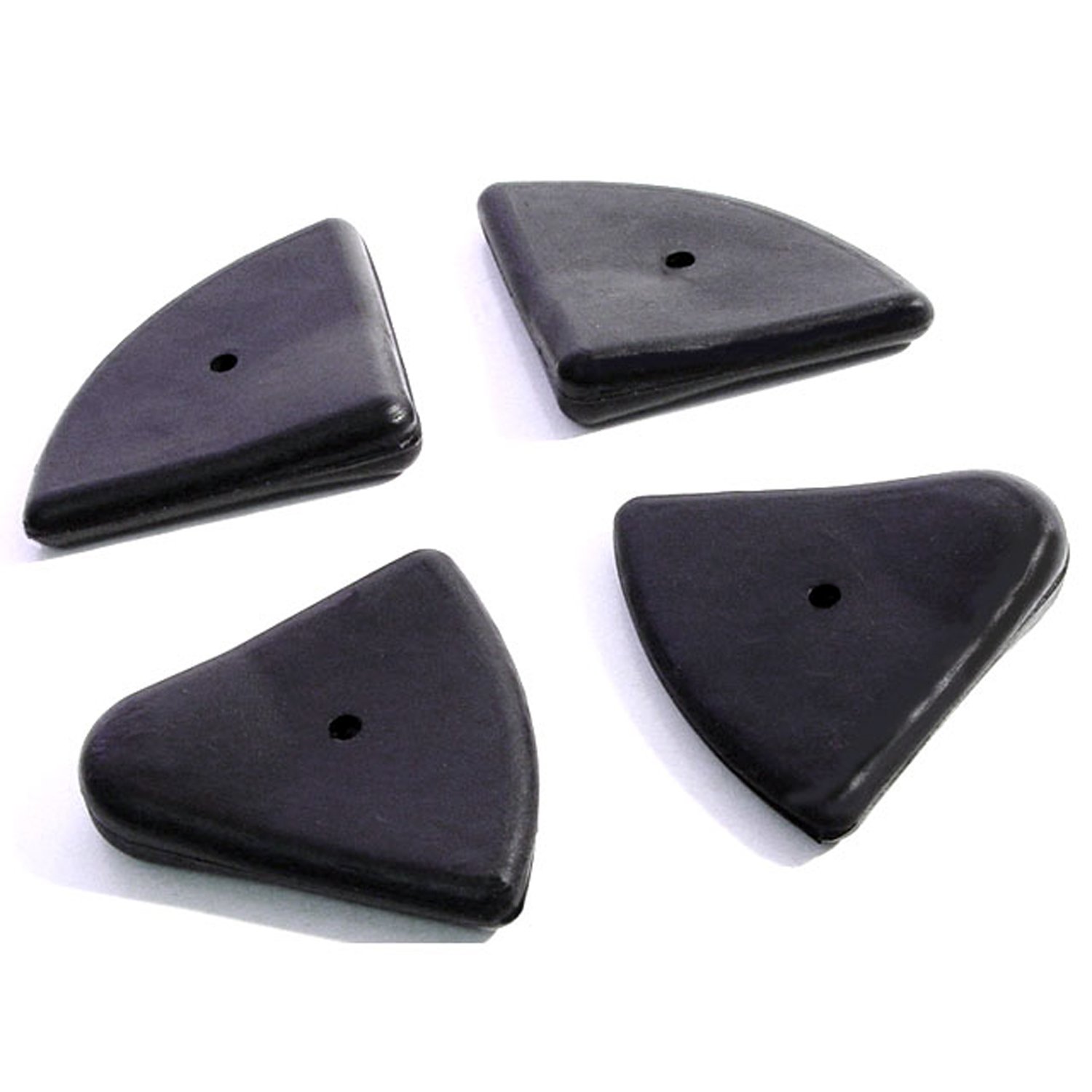 1937 Mercedes-Benz 170 V Hood Corners. 2 Front and 2 Rear Corners. 4-Piece Set-HC 26Hood Corners. 2 Front and 2 Rear Corners. 4-Piece Set
1937 Mercedes-Benz 170 V Hood Corners. 2 Front and 2 Rear Corners. 4-Piece Set-HC 26Hood Corners. 2 Front and 2 Rear Corners. 4-Piece Set 1937 Mercedes-Benz 170 V Trunk Lower Hinge Pad. 2-1/8" wide X 4-1/4" long. Each-MP 822Trunk Lower Hinge Pad. 2-1/8" wide X 4-1/4" long. Each
1937 Mercedes-Benz 170 V Trunk Lower Hinge Pad. 2-1/8" wide X 4-1/4" long. Each-MP 822Trunk Lower Hinge Pad. 2-1/8" wide X 4-1/4" long. Each 1937 Mercedes-Benz 170 V Tail-light Pads. 2-1/4" wide X 4-5/8" long. Pair-MP 823-BTail-light Pads. 2-1/4" wide X 4-5/8" long. Pair
1937 Mercedes-Benz 170 V Tail-light Pads. 2-1/4" wide X 4-5/8" long. Pair-MP 823-BTail-light Pads. 2-1/4" wide X 4-5/8" long. Pair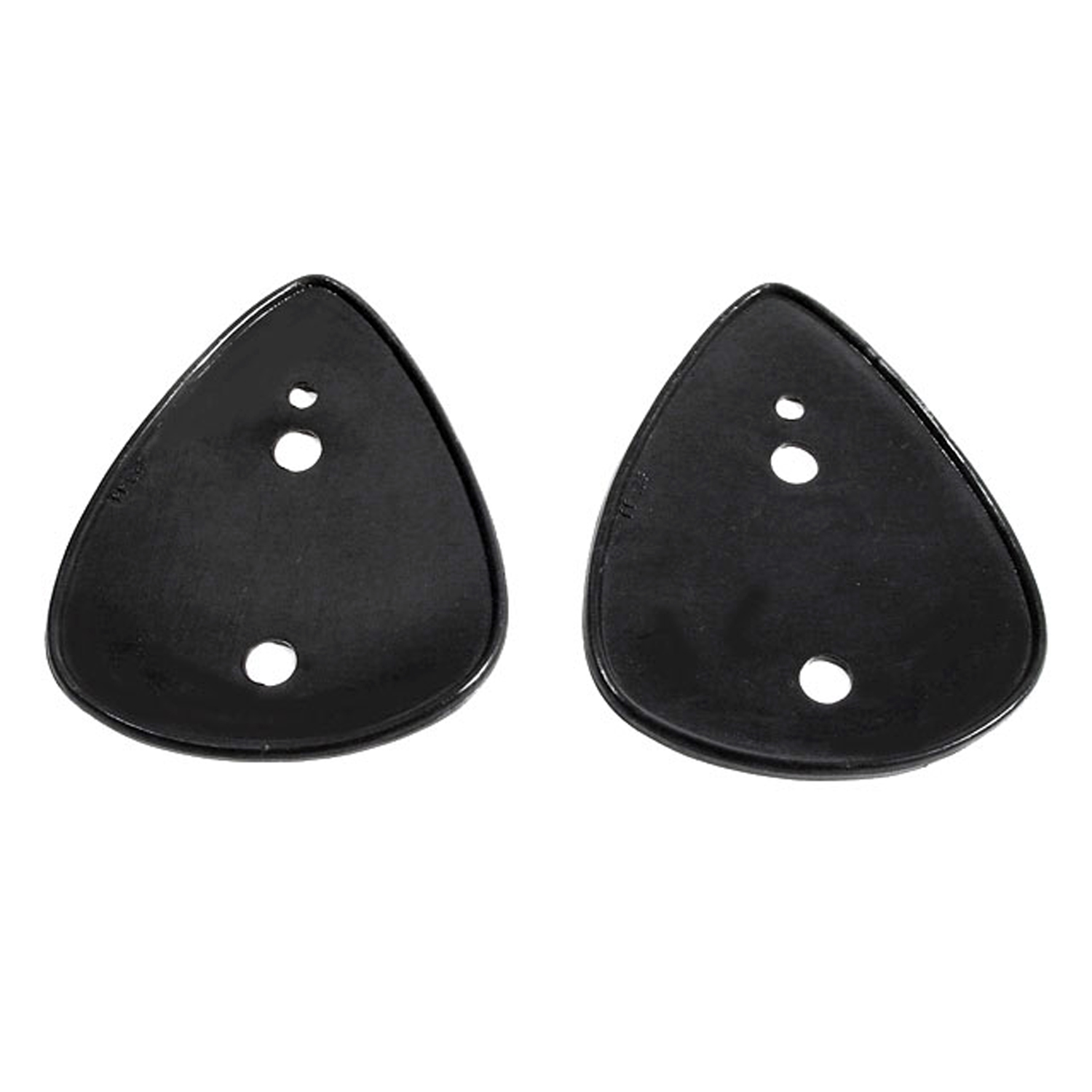 1937 Mercedes-Benz 170 V Park Light Pads. Made for the stamped fender light-MP 823-JJPark Light Pads. Made for the stamped fender light. 3-7/8" wide X 5-1/8" long. Pair
1937 Mercedes-Benz 170 V Park Light Pads. Made for the stamped fender light-MP 823-JJPark Light Pads. Made for the stamped fender light. 3-7/8" wide X 5-1/8" long. Pair 1937 Mercedes-Benz 170 V Door Handle Pads. 1-1/2" wide X 2-1/2" long. Pair-MP 823-NDoor Handle Pads. 1-1/2" wide X 2-1/2" long. Pair
1937 Mercedes-Benz 170 V Door Handle Pads. 1-1/2" wide X 2-1/2" long. Pair-MP 823-NDoor Handle Pads. 1-1/2" wide X 2-1/2" long. Pair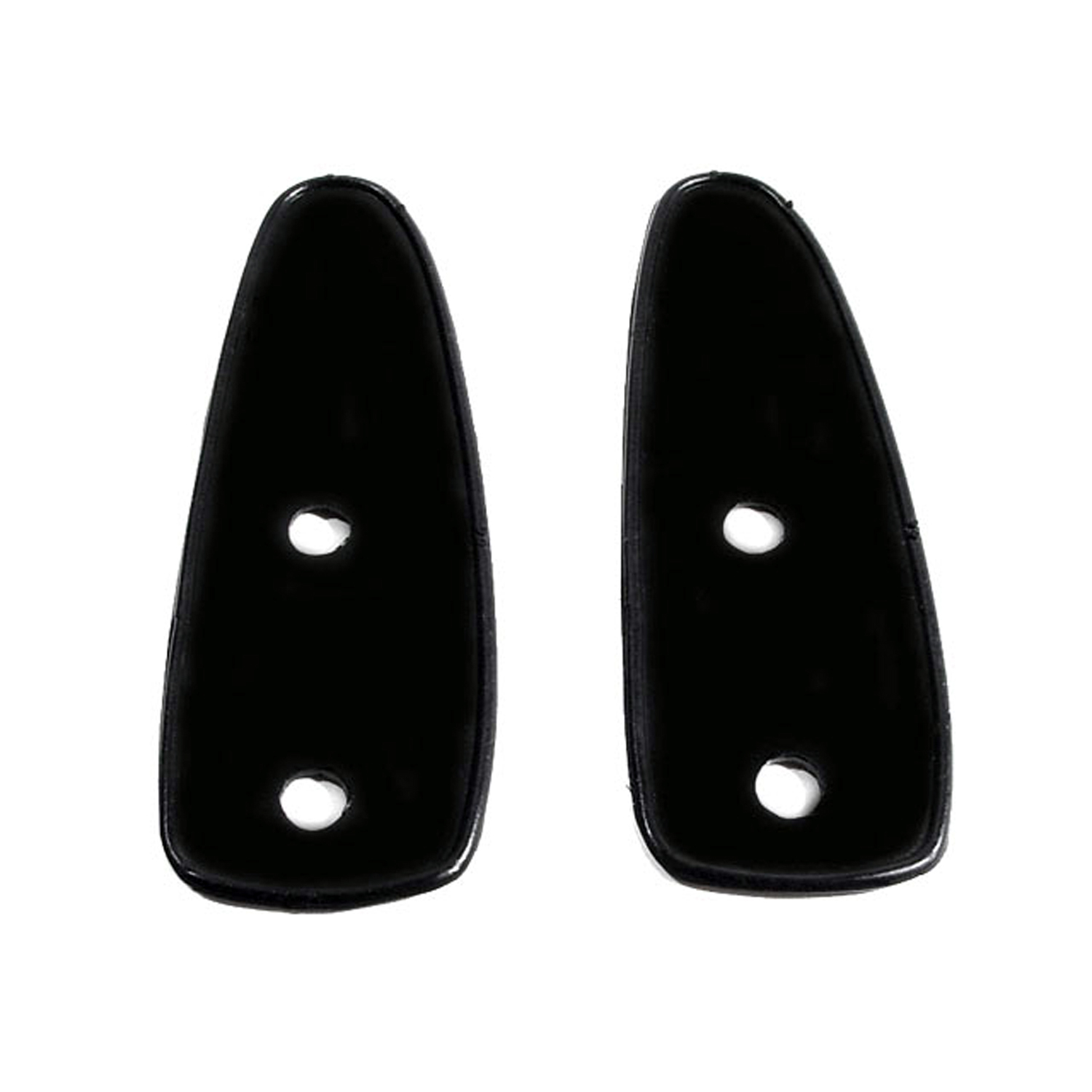 1937 Mercedes-Benz 170 V Park Light Pads. 2-1/4" wide X 6-1/8" long. Pair-MP 823-QPark Light Pads. 2-1/4" wide X 6-1/8" long. Pair
1937 Mercedes-Benz 170 V Park Light Pads. 2-1/4" wide X 6-1/8" long. Pair-MP 823-QPark Light Pads. 2-1/4" wide X 6-1/8" long. Pair 1937 Mercedes-Benz 170 V Headlight Pads. 3-1/2" wide X 7-5/8" long. Pair-MP 824-PHeadlight Pads. 3-1/2" wide X 7-5/8" long. Pair
1937 Mercedes-Benz 170 V Headlight Pads. 3-1/2" wide X 7-5/8" long. Pair-MP 824-PHeadlight Pads. 3-1/2" wide X 7-5/8" long. Pair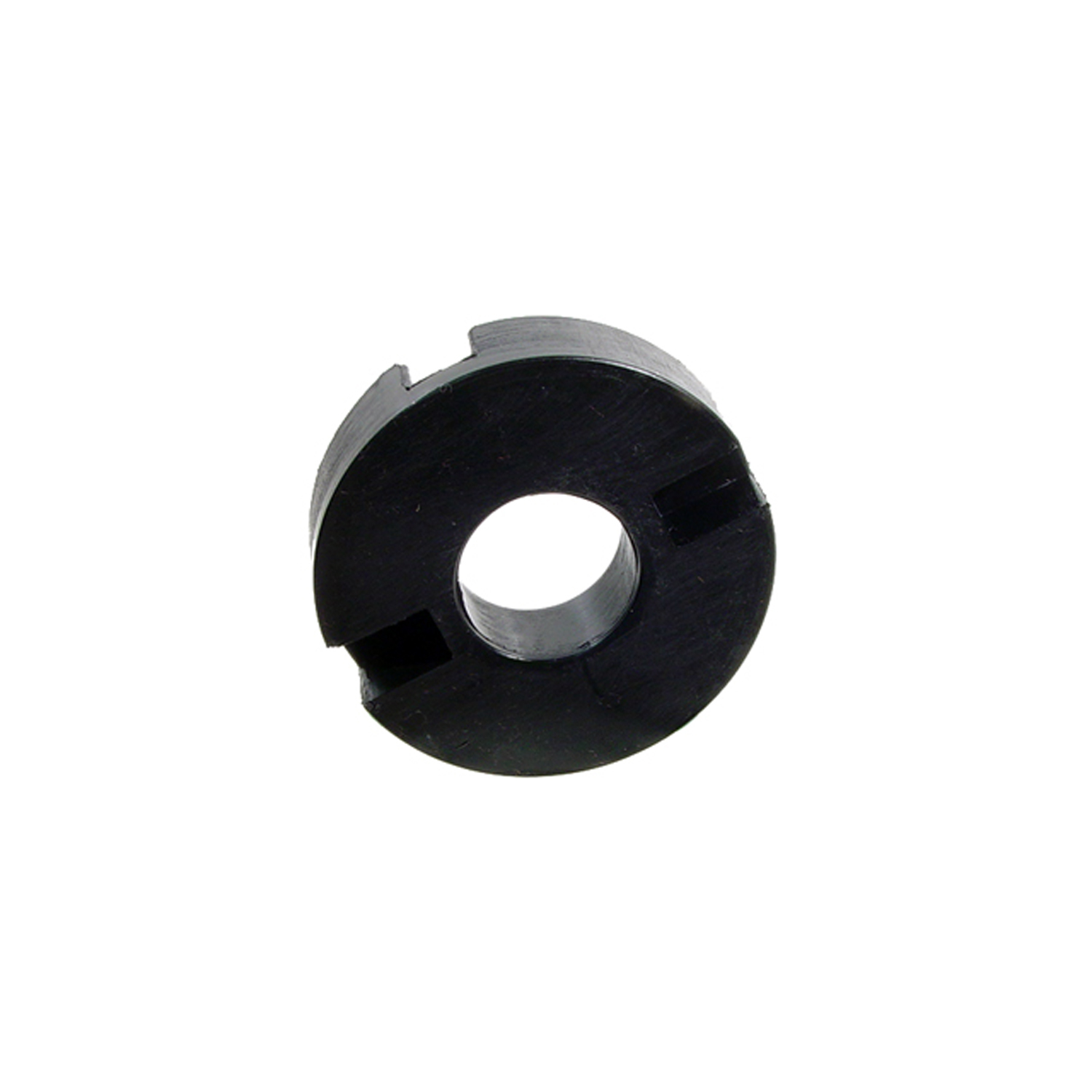 1937 Mercedes-Benz 170 V Coupler to Engine Seal. 1-1/8" I.D., 2-3/4" O.D. Each-RP 15Coupler to Engine Seal. 1-1/8" I.D., 2-3/4" O.D. Each
1937 Mercedes-Benz 170 V Coupler to Engine Seal. 1-1/8" I.D., 2-3/4" O.D. Each-RP 15Coupler to Engine Seal. 1-1/8" I.D., 2-3/4" O.D. Each 1937 Mercedes-Benz 170 V Flexible glass-run channel. Rubber covered and pile lined-WC 12-96Flexible glass-run channel. Rubber covered and pile lined. Unbeaded. 96 in. long. Each. NOTE: $20 special shipping charge applies for domestic orders. Call or email for overseas shipping costs. Part can be sectioned in two or three equal lengths to reduce overseas shipping costs.
1937 Mercedes-Benz 170 V Flexible glass-run channel. Rubber covered and pile lined-WC 12-96Flexible glass-run channel. Rubber covered and pile lined. Unbeaded. 96 in. long. Each. NOTE: $20 special shipping charge applies for domestic orders. Call or email for overseas shipping costs. Part can be sectioned in two or three equal lengths to reduce overseas shipping costs.Why Choose Metro?
For over 100 years, Metro Moulded Parts has been the pinnacle of quality in classic car restoration parts. Our commitment to precision and authenticity in every component ensures a perfect fit and an OEM-level appearance.
- Expert Craftsmanship & Quality: Each part is a testament to our dedication to reliability and perfection, crafted from original designs and thoroughly tested.
- Advanced Technology: We use cutting-edge techniques to create flawless, long-lasting parts that surpass others in performance.
- SuperSoft Sponge – The Ultimate Door Seal: Not only are our door seals 30% softer than competitors', but they're also guaranteed to never leak. They effectively reduce wind and road noise, enhancing your classic car's comfort and driving experience.
- Proudly American: Our parts are a product of American craftsmanship, made in the USA with a spirit of excellence and heritage.
- Unrivaled Warranty: We back our products with a 30-year industry-leading warranty, a testament to our confidence in their quality.
Join us in preserving the legacy of classic cars with parts that are crafted for perfection, not just made.

